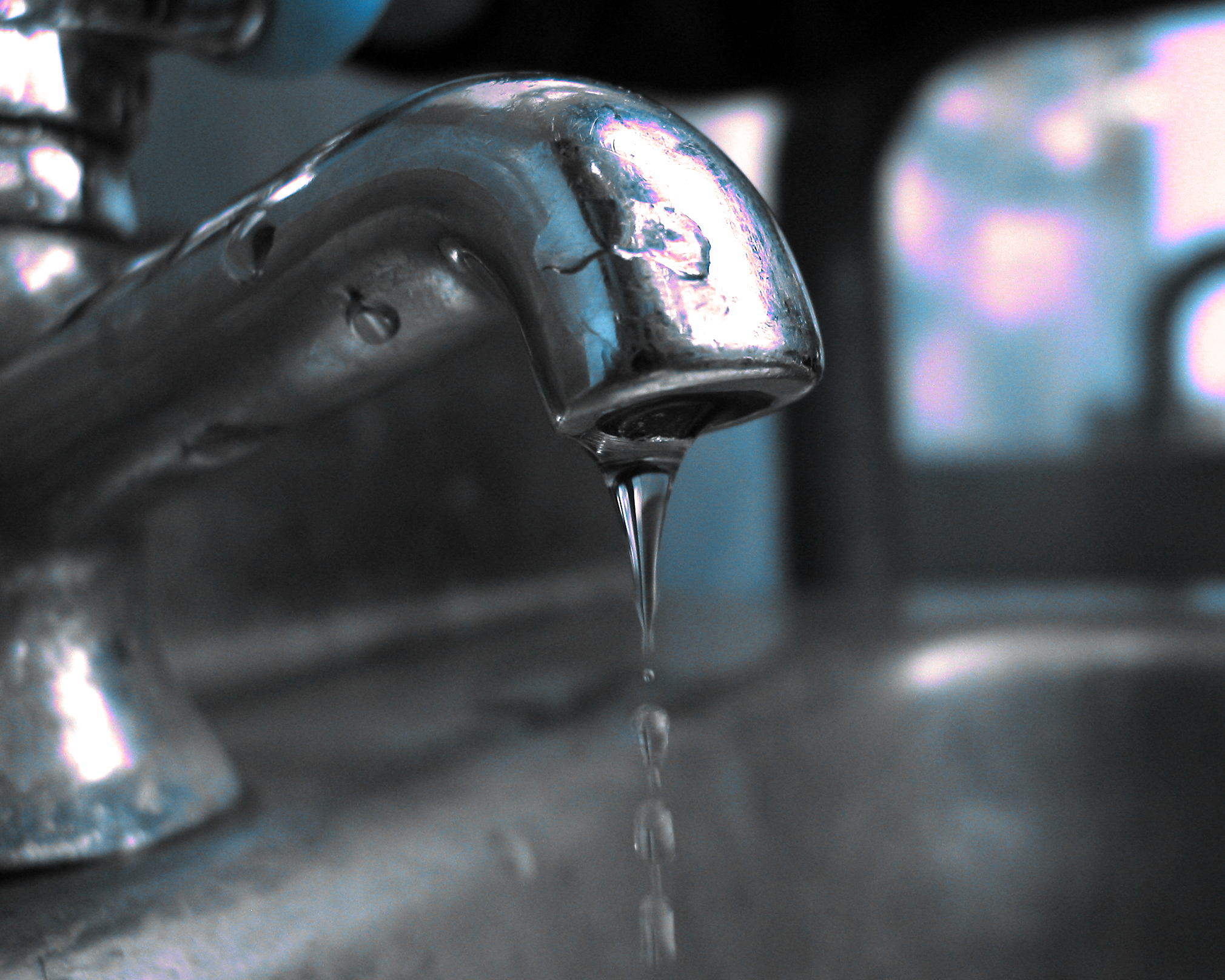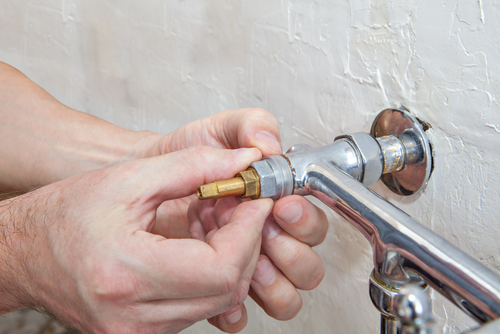Every person may have their own idea on the subject of What Causes Leaky Faucets & How To Fix Them.

Dripping faucets might appear like a small hassle, yet their impact goes beyond simply the aggravation of the sound. From wasting water to incurring unnecessary economic prices and health risks, ignoring a dripping faucet can bring about numerous effects. In this write-up, we'll explore why it's vital to address this common household concern immediately and successfully.
Wastefulness of Water
Environmental Impact
Trickling faucets contribute dramatically to water waste. According to the Environmental Protection Agency (EPA), a solitary faucet trickling at one drip per second can waste greater than 3,000 gallons of water per year. This not just strains water sources but additionally affects ecological communities and wildlife depending on them.
Step-by-Step Guide to Taking Care Of a Dripping Faucet
Tools Called for
Prior to attempting to deal with a dripping faucet, collect the necessary tools, consisting of an adjustable wrench, screwdrivers, replacement components (such as washing machines or cartridges), and plumber's tape.
Common Faucet Issues and Their Solutions
Determine the sort of tap and the specific issue triggering the drip. Typical issues consist of damaged washers, corroded valve seats, or defective O-rings. Refer to producer directions or on the internet tutorials for step-by-step assistance on repair work.
Financial Expenses
Enhanced Water Bills
Beyond the ecological influence, dripping taps can blow up water expenses significantly. The built up wastage over time converts right into higher energy costs, which might have been avoided with prompt repair work.
Potential Property Damages
Additionally, extended trickling can cause damage to components and surfaces surrounding the tap. Water build-up can create staining, deterioration, and even architectural issues if left ignored, resulting in extra repair expenses.
Wellness Issues
Mold And Mildew and Mold Growth
The continuous visibility of moisture from a dripping faucet develops a perfect atmosphere for mold and mildew and mold growth. These fungi not only jeopardize interior air top quality yet likewise pose health dangers, specifically for individuals with breathing problems or allergies.
Waterborne Conditions
Stagnant water in trickling faucets can end up being a breeding place for germs and other pathogens, raising the danger of waterborne conditions. Contaminants such as Legionella microorganisms prosper in stationary water, possibly resulting in serious illnesses when ingested or inhaled.
Do it yourself vs. Professional Repair
Pros and Cons of DIY Repair Work
While some might try to repair a trickling tap themselves, do it yourself fixings feature their very own collection of obstacles. Without proper knowledge and devices, do it yourself attempts can intensify the problem or result in incomplete repairs, lengthening the issue.
Benefits of Hiring a Specialist Plumber
Working with a professional plumber makes certain that the underlying source of the leaking faucet is dealt with effectively. Plumbing professionals have the competence and equipment to identify and repair faucet issues successfully, saving time and decreasing the risk of additional damage.
Environmental Duty
Individual Payment to Preservation
Taking responsibility for dealing with trickling faucets lines up with wider initiatives towards water conservation and ecological sustainability. Every person's actions collectively make a substantial effect on protecting precious sources.
Lasting Living Practices
By focusing on prompt repairs and adopting water-saving behaviors, people add to sustainable living techniques that profit both present and future generations.
Safety nets
Routine Upkeep Tips
To avoid dripping faucets, execute routine upkeep such as cleaning up aerators, inspecting for leaks, and changing worn-out components quickly. Furthermore, take into consideration installing water-saving tools or upgrading to more reliable components.
Importance of Prompt Fixes
Addressing leaking taps as quickly as they're discovered stops more water wastage and possible damage, ultimately saving both water and money over time.
Influence On Home Worth
Understanding of Well-Maintained Building
Preserving a building in good condition, consisting of resolving upkeep problems like leaking faucets, enhances its perceived worth and worth among possible purchasers or renters.
Influence on Resale Value
Properties with properly maintained plumbing components, including faucets, command higher resale worths in the realty market. Addressing trickling faucets can contribute to a favorable impression during building inspections and arrangements.
Conclusion
Resolving a leaking tap goes beyond simple convenience; it's a necessary action toward conserving water, minimizing financial expenses, and securing health and home. Whether via do it yourself repairs or expert assistance, acting to take care of trickling taps is a tiny yet impactful way to promote accountable stewardship of sources and add to a healthier, much more sustainable future.
How to Fix a Dripping or Leaky Faucet
A leaking faucet is one of the most common problems that homeowners encounter, but it being commonplace doesn’t make it any less annoying. The constant drip drip drip of a leaking bathtub faucet, showerhead, or sink tap can disturb your home’s serenity. Left neglected, a dripping faucet can also result in higher water bills and discoloration or mold growth in your sink or plumbing fixtures.
Fortunately, you don’t have to be a trained plumber to know how to stop a dripping faucet. With some basic tools, replacement parts, and a little patience, leaky faucet repair is a breeze. In this article, we’ll explain what causes dripping faucets and how you can fix them.
What Causes a Leaking Faucet?
Kitchen and bathroom faucets come in all manner of designs, but most involve some combination of valves, O-rings, seals, and washers. The O-ring is usually the weakest link, but any one of these pieces can wear down over time. Heat, moisture, temperature fluctuations, minerals, mold, and movement can contribute to warping and corrosion, breaking the watertight seal. This just comes with the territory of being a homeowner. Everything is always subject to wear and tear, and some component parts of your appliances and fixtures need to be replaced on occasion. At least replacement O-rings are cheap!
More rarely, dripping faucets can be a symptom of excessively high water pressure. Were this the case in your home, you would probably notice that the leak is not isolated to one faucet. Water pressure issues are harder to resolve on your own. We recommend contacting a professional plumber if you suspect your water pressure is too high.
How to Fix a Dripping Faucet
Pipe wrench or monkey wrench Allen wrench set Screwdrivers Old towel or rag Shut off the water.
Before you do anything, you need to turn off the water to keep from drenching your kitchen or bathroom. You should find a valve under the sink and against the wall. Once you’ve turned this valve, try turning the faucet on to confirm that the water source has been cut off.
If you can’t locate your local valve for the faucet you’re working on, you can always shut off the water to the house at the main valve. Of course, this will prohibit anyone from using the sinks, showers, or toilets while you’re working on the faucet that’s giving you trouble.
Plug or block the drain.
You’ll be disassembling the faucet and removing some small bits of hardware. Plug the drain with a stopper or rag to avoid the possibility of a small screw falling into your P-trap.
Take apart the faucet assembly.
There are several varieties of kitchen and bathroom faucets, each with its own manner of assembly. For detailed instructions on how to disassemble your faucet, you can refer to the fixture’s manual or contact the manufacturer. If you know whether you have a ball, disc, cartridge, or compression faucet, you can find detailed schematics online.
In general, you need to begin by removing the faucet handles. You might notice a small screw that you’ll need to remove with a screwdriver or Allen wrench. If you don’t see any visible securing hardware, it’s likely hidden under a decorative cap that can be unscrewed or popped off with flathead screwdriver.
Remove each piece methodically, consulting a schematic when necessary. Take notes or arrange the pieces in such a way to make it easier to correctly reassemble the faucet later.
Remove the cartridge.
Once you’ve removed the handles and securing hardware, you should be able to remove the valve cartridge or stem. Some cartridges will slide right out. Other faucet models will require you to loosen a nut with a pipe wrench before you can remove the valve stem.
Examine the exposed hardware.
With the cartridge or stem removed, inspect the component parts. Check the rubber O-rings for wear and tear. Also examine the seat washer for corrosion or other damage. These pieces are usually the responsible parties for a dripping faucet, but it’s worth inspecting the other component parts while you have the faucet disassembled.
Find replacement parts.
Once you’ve identified which faucet component has failed, find an identical replacement. Your local hardware store should have O-rings, seat washers, and other standard components in stock. If you have a luxury or uncommon faucet, you may have to contact the manufacturer for a replacement part.
It’s a good idea to take your old parts with you to the hardware store so you can compare them with the store’s inventory and be sure you’re purchasing the correct replacement.
Reassemble the faucet.
With your new parts in hand, reconstruct the faucet and handles. Don’t be tempted to overtighten screws or nuts. You might think this could create a better seal, but it can instead damage or bend a delicate part of the assembly and create a new problem for you.
Turn on the water and test the faucet.
The only thing left to do is test your work. Unplug the sink, turn the water back on, and try the faucet. Congratulate yourself on a job well done!
https://www.libertyhomeguard.com/how-to-fix-a-dripping-or-leaky-faucet/

Do you appreciate reading up on Should I Repair or Replace a Leaky Faucet?? Create feedback below. We will be delighted to hear your opinion about this blog posting. Hoping that you come back again in the near future. Appreciated our blog entry? Please share it. Help others check it out. Kudos for being here. Please check our blog back soon.